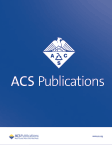摘要 PO5-14-04:傅立叶变换红外光谱分析脂质区域:利用PCA-SVM区分乳腺癌和良性乳腺疾病
IF 3.4
Q2 PUBLIC, ENVIRONMENTAL & OCCUPATIONAL HEALTH
引用次数: 0
摘要
背景:乳腺癌(BC)是全球确诊率最高的癌症,2020 年将新增 226 万例。乳房 X 射线照相术是首选的筛查方法,但它存在辐射暴露和对致密乳房灵敏度低等局限性。因此,需要准确的诊断方法来检测乳腺癌并区分良性病症。研究目的本研究旨在利用傅立叶变换红外光谱法(ATR-FTIR)开发一种自动工具,用于比较良性乳腺疾病(BBD)和乳腺癌(BC)的脂质光谱区域,以确定其潜在的诊断价值。研究方法本研究在巴西 MG 省乌伯兰迪亚的一家临床医院进行,经乌伯兰迪亚联邦大学人类研究伦理委员会批准,所有受试者均提供了书面知情同意书。前往该临床医院接受乳腺手术的妇女被邀请作为志愿者参与研究。手术和组织病理学分析后,根据组织学类型、分期以及ER、PR和HER2受体状态对发现的肿瘤和病变进行分类。共有 60 名女性参与了这项研究,其中 27 人患有 BBD,33 人患有 BC。傅立叶变换红外光谱仪使用安捷伦 Cary 600 系列傅立叶变换红外光谱仪和 MCT 检测器测量了 4000 cm-1 至 650 cm-1 波长范围内的光谱。每个样品分析前都使用空气光谱作为背景。样品光谱一式三份,光谱分辨率为 4 cm-1,每次测量进行 128 次扫描。红外光谱在经过预处理后进行分析,预处理包括正基线橡胶带归一化、最小值和最大值归一化以及应用二次导数。结果:利用主成分分析(PCA)和支持向量机算法(PCA-SVM),3050-2800 cm-1 区域能够区分 BC 和 BBD,准确率为 80%,灵敏度为 88%,特异性为 70%。据了解,血清中生物大分子含量的变化、增加或减少与 BC 的存在或不存在有关。在临床实践中采用这种方法可以自动诊断 BC,监测在整个治疗过程中是否需要改变疗法或干预措施。傅立叶变换红外光谱有可能协助临床决策制定随访或活检建议,避免不必要的活检,因为活检比采血更具创伤性,费用也更高,即使病变不是高度可疑,也往往会给患者带来极大的焦虑。结论这项研究表明,通过使用主成分分析(PCA)和支持向量机算法(PCA-SVM)分析脂质光谱区域的微创、快速和经济有效的方法,可以准确地检测出 BC。引用格式:Juliana Pereira, Alinne Faria, Izabella Ferreira, Letícia Santos, Donizeti Santos, Marcelo Maia, Ohanna Costa, Raul Freitas, Carlos Paiva, Yara Maia.脂质区域的傅立叶变换红外光谱分析:使用 PCA-SVM 区分乳腺癌和良性乳腺疾病 [摘要]。在:2023 年圣安东尼奥乳腺癌研讨会论文集;2023 年 12 月 5-9 日;德克萨斯州圣安东尼奥。费城(宾夕法尼亚州):AACR; Cancer Res 2024;84(9 Suppl):Abstract nr PO5-14-04.本文章由计算机程序翻译,如有差异,请以英文原文为准。
Abstract PO5-14-04: FTIR Spectroscopy Analysis of Lipid Region: Distinguishing Breast Cancer from Benign Breast Diseases Using PCA-SVM
Background: Breast cancer (BC) is the most diagnosed type worldwide, with 2.26 million new cases in 2020. Mammography is the preferred screening method, but it has limitations such as radiation exposure and low sensitivity in dense breasts. Therefore, there is a need for accurate diagnostic methods to detect breast cancer and distinguish benign conditions. Objective: This study aimed to develop an automated tool for the comparison of lipid spectral region in benign breast disease (BBD) and breast cancer (BC) to determine their potential diagnostic value using Fourier Transform Infrared Spectroscopy (ATR-FTIR).
Methods: This study was conducted at a Clinical Hospital in Uberlandia, MG, Brazil, after approval by the Human Research Ethics Committee of the Federal University of Uberlandia, and all subjects provided written informed consent. Women who went to the Clinical Hospital for breast surgery were invited to participate in the study as volunteers. After surgery and histopathological analysis, the tumors and lesions found were classified according to histological type, staging, and the status of ER, PR, and HER2 receptors. A total of 60 women participated in the study, of whom 27 had BBD, and 33 had BC. Spectra were measured in the wavenumber range of 4000 cm-1 to 650 cm-1 using an Agilent Cary 600 Series FTIR spectrometer coupled to an MCT detector. The air spectrum was used as a background before each sample analysis. The sample spectra were obtained in triplicate, with a spectral resolution of 4 cm-1, and 128 scans were performed for each measurement. The infrared spectra were analyzed after undergoing preprocessing, which involved positive baseline rubberband normalization, normalization by minimum and maximum, and application of the second derivative. Results: The region of 3050-2800 cm-1 was able to differentiate BC from BBD using principal component analysis (PCA) followed by the support vector machine algorithm (PCA-SVM) with an accuracy of 80%, sensitivity of 88%, and specificity of 70%. This range corresponds to the vibration of lipids, and it is known that changes in the contents of biomolecules in the serum, an increase or decrease, can be related to the presence or absence of BC. The implementation of this approach in clinical practice may automate the diagnosis of BC, monitoring whether changes in therapy or interventions are necessary throughout the treatment. FTIR can potentially assist in clinical decision-making regarding follow-up or biopsy recommendations, avoiding unnecessary biopsies that are more invasive and expensive than blood collection, and which often cause significant anxiety to the patient even if the lesion is not highly suspicious. Conclusion: This study shows that it is possible to detect BC with good accuracy through a minimally invasive, fast, and cost-effective method analyzing the lipid spectral region using principal component analysis (PCA) followed by the support vector machine algorithm (PCA-SVM).
Citation Format: Juliana Pereira, Alinne Faria, Izabella Ferreira, Letícia Santos, Donizeti Santos, Marcelo Maia, Ohanna Costa, Raul Freitas, Carlos Paiva, Yara Maia. FTIR Spectroscopy Analysis of Lipid Region: Distinguishing Breast Cancer from Benign Breast Diseases Using PCA-SVM [abstract]. In: Proceedings of the 2023 San Antonio Breast Cancer Symposium; 2023 Dec 5-9; San Antonio, TX. Philadelphia (PA): AACR; Cancer Res 2024;84(9 Suppl):Abstract nr PO5-14-04.
求助全文
通过发布文献求助,成功后即可免费获取论文全文。
去求助
来源期刊

ACS Chemical Health & Safety
PUBLIC, ENVIRONMENTAL & OCCUPATIONAL HEALTH-
CiteScore
3.10
自引率
20.00%
发文量
63
期刊介绍:
The Journal of Chemical Health and Safety focuses on news, information, and ideas relating to issues and advances in chemical health and safety. The Journal of Chemical Health and Safety covers up-to-the minute, in-depth views of safety issues ranging from OSHA and EPA regulations to the safe handling of hazardous waste, from the latest innovations in effective chemical hygiene practices to the courts'' most recent rulings on safety-related lawsuits. The Journal of Chemical Health and Safety presents real-world information that health, safety and environmental professionals and others responsible for the safety of their workplaces can put to use right away, identifying potential and developing safety concerns before they do real harm.
 求助内容:
求助内容: 应助结果提醒方式:
应助结果提醒方式:


